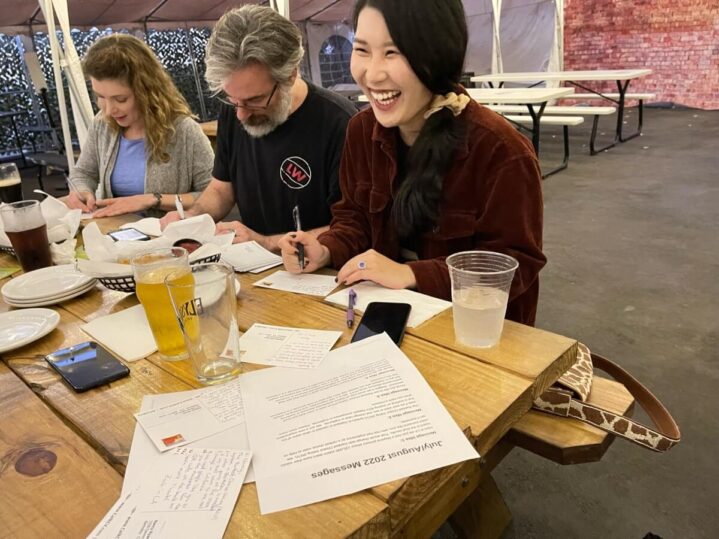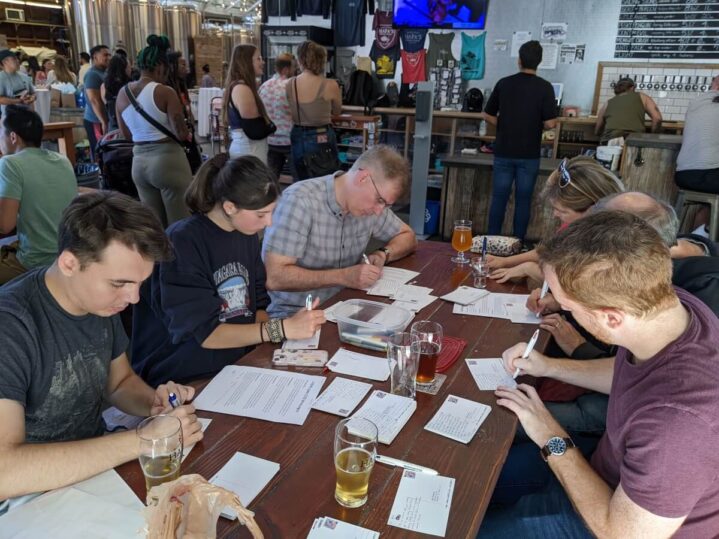How to Take Effective Political Action
How to Lead a Letter to the Editor Drive
Writing one letter to the editor (LTE) is great – but you can double, or even triple your impact by bringing others along by organizing a LTE drive to support the campaign you are working on. If you need to review how to write a LTE check out the easy step by step by process on our How to Write a LTE Guide.
If you are ready to take your LTE push to the next level, here are some steps to help you get started.
Step 1: Create a LTE Guide, special for your Campaign
Create your own version of a LTE guide, with campaign specific talking points, geographic and campaign specific tactics and a sample letter to make it easy for your supporters to get involved. You guide should include:
- A Campaign update, to make sure everyone who reads your guide is up to speed with the latest and has all of the most recent and relevant information.
- Talking points, make sure your supporters can easily find resources that provide approved campaign talking points, general information about the campaign and Frequently Asked Questions style resources where they can dig deeper if they’d like to.
- A step by step breakdown, make things easy on your supporters and spell out the different steps it takes to get published.
- A sample letter, to make things even easier, a sample letter can be a great way to help those struggling to get started or for a supporter wanting to see what the final product should look like.

Make a copy of this template and get started. Fill in all of the “[brackets]” with up to date and concise information about the campaign. Once you’ve drafted a version specific to your campaign, get feedback from other leaders on any edits and prepare to share it on trainings, in group meetings or in-person at rallies and campaign events.
Step 2: Organize LTE Parties and Trainings
Once you have a guide that organizes your campaign information, talking points, and sample writing, now it’s time to get out and recruit people to your drive.
Your training can act as a kick-off for the letter writing drive. We recommend using an on-line virtual event such as Zoom or Google Meets to run your training and recording it to use as a resource in the future. However, LTE parties also work great in-person if you have a large enough audience in your local area. Here are the different deliverables you’ll need to run a successful training:
- Training slides, here is a template you can use to get started. The basic components of your LTE training are as follows:
- Welcome
- Intro, table setting
- Political/campaign update
- What is an LTE? Why is it important?
- LTE breakdown / workshop

- Training run of show, this is more up to the training owner, but we recommend having a run of show to keep you and any collaborators aligned throughout the webinar.
- Event page, create an electronic registration page to keep track of RSVPs and to follow up with those who have registered to confirm their participation or to follow up if they weren’t able to make it. The event page could be in Everyaction, ActionKit, EventBrite or just be a Zoom meeting registration form, whatever is accessible to your organization.
- Recruitment plan (email, sms, etc.), of course, without an audience your training won’t be impactful. Make sure to do a lot of recruitment and aim to have at least 10-15 people join the training to make your effort worthwhile. *Note: In order to have a turnout of 10-15 people you should aim to confirm at least twice the number of people due to predictable drop off in turn out.
To make sure you run a successful event, make sure to consider:
Delegating tasks – It’s important to make sure tasks are distributed among your team. Here are some key tasks you’ll probably need to assign while planning an event:
- Set up a meeting with the core team
- Event coordination and management
- Reserve a space
- Print materials
- Confirm speakers
- Outreach in the community
- Event recruitment
- Engaging current supporters
- Write LTEs and coordinate with media outlets
- Manage social media platforms to help spread the word
- Create a training deck
- Create a LTE guide
Find and Attract Attendees
- Message: Keep your invitation short. The longer the message, the less likely people are to read it. Keep it readable by clearly laying out where and when the event is, who is involved, what it is, and why they should come.
- Audience: The more people you reach out to, the better. Ask former attendees to reach out to their own circles, reach out to local groups (political or nonpolitical) and people who would be most impacted by the event.
- Messenger: Who is the message coming from? Try to use familiar voices within the community to make a personal connection.
- The Rule of Halves: If 100 are invited, 50 will say yes, 25 show up, 12 stay until the end, and 6 show up to the next meeting.
- Effective Recruitment Tactics
- Post the event link to social media
- Share the event link via email and text message
- Make personalized phone calls to supporters to invite them to the event
- Share information about the event at other activities where supporters are gathered
- Reach out to partner organizations and coalition partners including student led organizations, engage a diverse range of people who could be invested in your issue
Support, Track and Analyze your progress to improve the drive
Tracking your progress will be key to improving the success of the overall drive. A good tracking process should help your supporters status on their LTE (i.e. “Drafting” “Submitted” or “Published”) up to date so you can most effectively follow-up with your participants. This will also help you communicate success and where you can improve for next time.
The most important thing is to keep track of how many folks are making it from attending the training, to drafting a letter, to submitting, to getting published. The % of participants that make it to each new step will set conversion rates that will give you baselines on what you can expect from future drives.
You can get started using this template. Copy and paste this into a new sheet.
Share your success
Make sure to communicate your success to inspire others to join the drive and get excited about the campaign you are leading. Letter to the Editor’s can be a great confidence boosting, validating evidence that the campaign is important and cared about by your community.
We recommend:
- Including LTE links and submission and published tallies in any reports that you are giving to exemplify impact and show reach.
- Calculating the reach of the newspapers you have had success in to report out the potential amount of individuals you could have reached, i.e. the Oregonian has an average readership of 7 million people per month.
- Create graphics to easily post on social media, organizing forums, and include in slide shows. Here is one from a successful push pass Ranked Choice Voting in Oregon:



